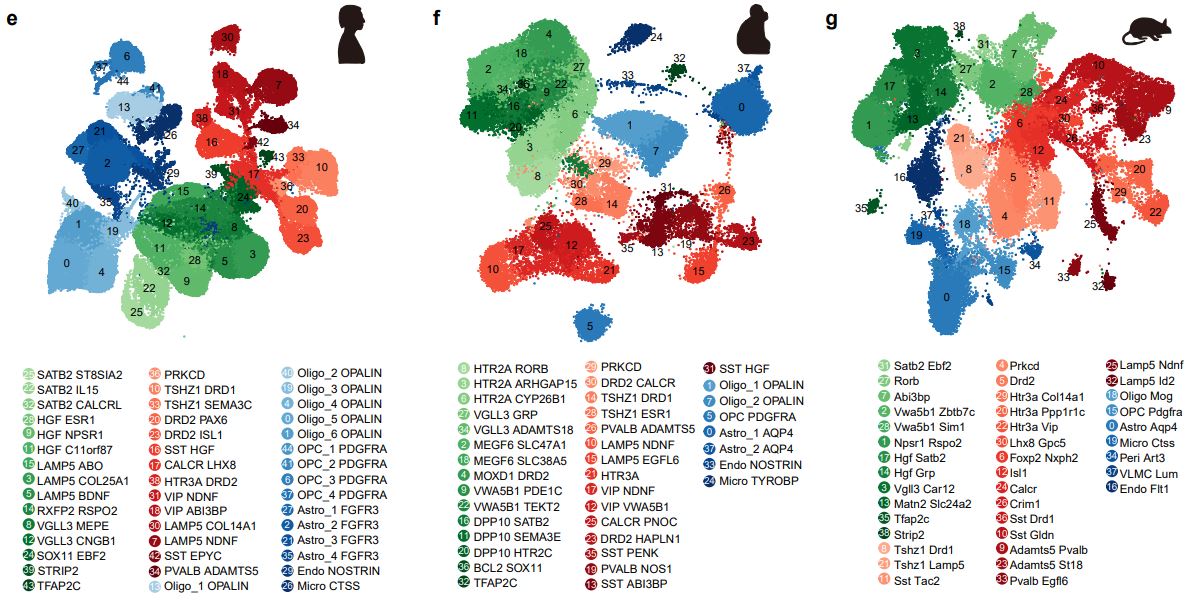Xiaoming Li's group published in Cell Discovery on amygdala evolution
The research team led by Prof. Xiaoming Li has recently published an article titled Molecular and cellular evolution of the amygdala across species analyzed by single-nucleus transcriptome profifiling in Cell Discoveryon Feb.14th, Beijing time. This research uncovered evolutionaryconservation and divergence of the amygdala across species, and laid a solid foundation for future studies of the amygdala function at the cell type level.
The amygdala, or an amygdala-like structure, is found in the brains of all vertebrates and plays a critical role in survival and reproduction. Damages or functional disruptions of the amygdala have been implicated in various neurological diseases, especially neuropsychiatric disorders, such as schizophrenia, anxiety, and bipolar disorder. The amygdala is a heterogeneous complex that includes multiple subnuclei and neuronal cell types originating from cortical and subcortical territories. However, the cellular architecture of the amygdala and how it has evolved remain elusive. This work generated single-nucleus RNA-sequencing data for more than 200,000 cells in the amygdala of humans, macaques, mice, and chickens. Abundant neuronal cell types from different amygdala subnuclei were identifified. Cross-species analysis revealed that inhibitory neurons and inhibitory neuron-enriched subnuclei of the amygdala were well-conserved in cellular composition and marker gene expression, whereas excitatory neuron-enriched subnuclei were relatively divergent. Furthermore, LAMP5+ interneurons were much more abundant in primates, while DRD2+ inhibitory neurons and LAMP5+ SATB2+ excitatory neurons were dominant in the human central amygdalar nucleus (CEA) and basolateral amygdalar complex (BLA), respectively. This work also identifified CEA-like neurons and their species-specifific distribution patterns in chickens. This research highlights the extreme cell-type diversity in the amygdala and reveals the conservation and divergence of cell types and gene expression patterns across species that may contribute to species-specifific adaptations.
Prof. Xiaoming Li from Zhejiang University School of Medicine is the main corresponding author. Prof. Xiaoqun Wang and Prof. Qian Wu from Beijing normal university are co-corresponding authors. Dr. Bin Yu, Qianqian Zhang and Lin Lin are co-first authors. This work was supported by Science and Technology Innovation 2030 - “Brain Science and Brain-Inspired Technology” Major Project, Major Program of the National Natural Science Foundation of China, , the Strategic Priority Research Program of the Chinese Academy of Sciences, Key-Area Research and Development Program of Guangdong Province, Key R&D Program of Zhejiang Province, Fundamental Research Funds for the Central Universities, and CAMS Innovation Fund for Medical Sciences.


Fig. 1 Profiling of amygdala cell types across mammals by snRNA-seq.







